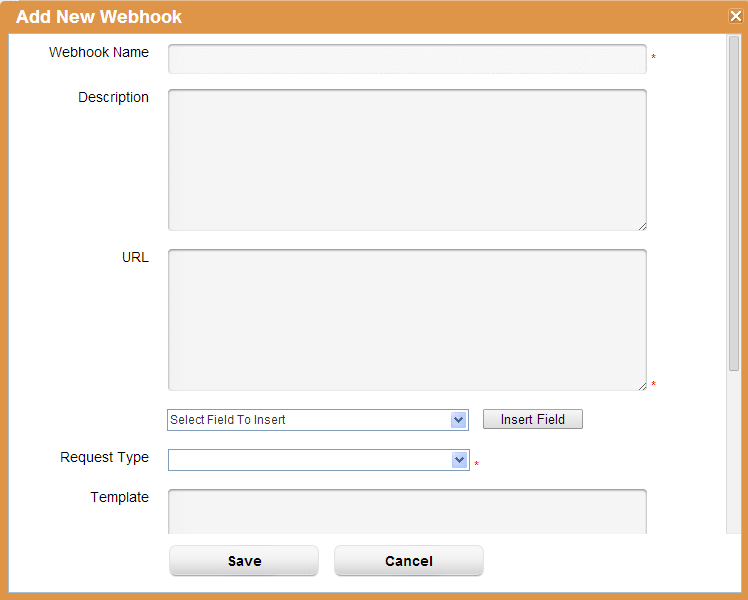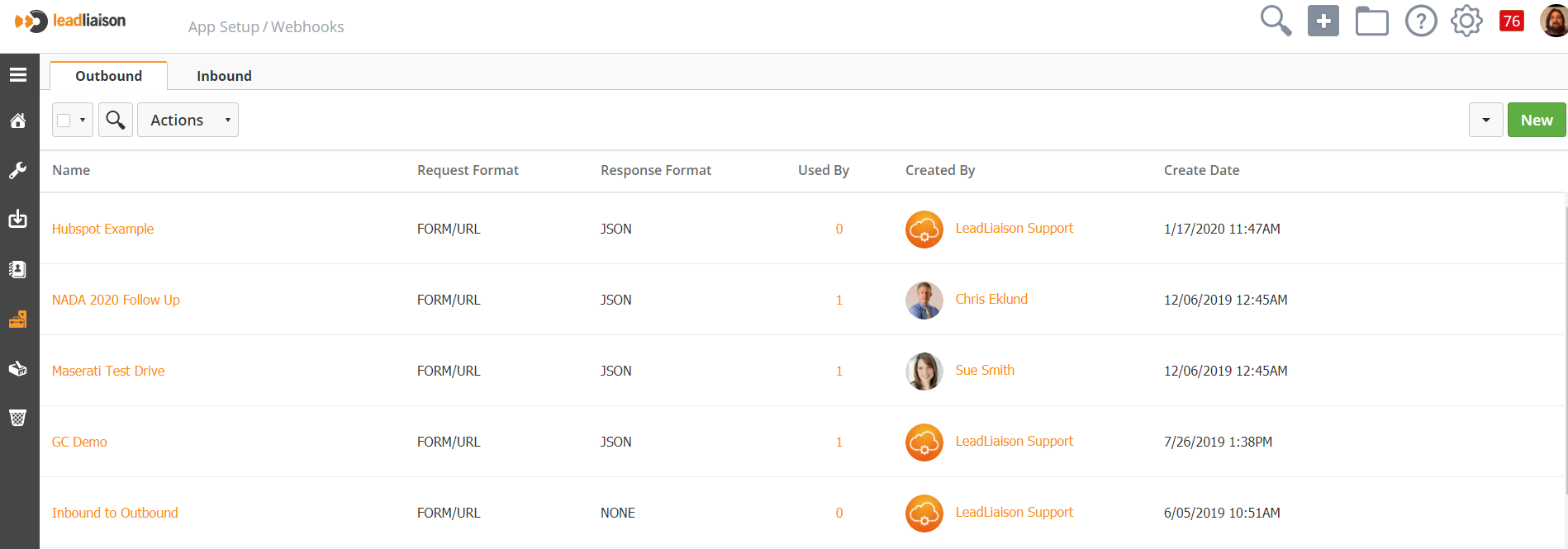...
At the moment, Lead Liaison can call a Webhook from a 3rd party. This capability is tightly integrated into our automation and a dedicated "Call Webhook" action is available for use. This action is explained here in more detail.
Use Cases for Webhooks
Even though the concept of Webhooks are simple, it's often times hard to figure out how they can be used to benefit your business and complement Lead Liaison. Here are a few ideas we've gathered for you.
- Create a Webhook that sends a text message to a Prospect or Customer's mobile phone.
- Create a Webhook that sends a direct mail piece (postcard) to a Prospect or Customer's address.
- Create a Webhook that sends an alert to yourself. promotional marketing material to a Prospect or Customer (following an event, as a thank you, around the Holidays).
- Create a Webhook that leaves your Prospect and/or Customer an automated voice mailsends an alert to yourself.
- Create a Webhook that creates a support ticket in your support console (create a case in Zendesk or in Salesforce.com).
...
To create a Webhook go to Administration Settings > App Setup > Webhooks > Add > New Webhook
A popup will appear. Enter the required information for the Webhook. Each field is explained below:
- Webhook Name = The name of the Webhook.
- Description = Description of the Webhook.
- URL = URL of the Webhook that Lead Liaison will call. Usually provided by the 3rd party.
- Insert Field Area = Used to insert any standard/custom Lead Liaison field into the Webhook URL. Place your cursor in the area in which you'd like to insert the variable and click the "Insert Field" button.
- Request Type = The format type of the Webhook sent from Lead Liaison to the receiving service in FORM/URL, JSON or XML format.
- Template:
- In case of a POST request type:
- you can use request encoding type as FORM/URL and make sure the template is written in this format: param_1=val_1¶m_2=val_2
- you can use request encoding type as JSON and make sure the template is written in JSON format. Note, the JSON post data must be valid. To validate it before writing it as a creating the template use this free tool http://jsonlint.com/.
- In case of a GET request type:
- append your parameters in the URL field as a query string like this: http://www.service-example.com/service?param_1=val_1¶m_2=val_2,
- alternatively, write the URL of the service in the URL field and the parameters in the template field "param_1=val_1¶m_2=val_2". Lead Liaison will append the template to the service URL.
- In case of a POST request type:
- Request Token Encoding = Encoding format when the Request Type equals Post. Can be FORM/URL or JSON.
- Response Type = The response type from the Webhook back to Lead Liaison (FORM/URL, JSON or XML).
| Info | ||
|---|---|---|
| ||
If the Webhook sends a response back to Lead Liaison don't forget to setup the Response Mapping. A Response Mapping will map the Webhook data object to a Lead Liaison field. Do get to the Response Mapping page, click the gear under the Actions column on the Manage Webhooks page and select Response Mapping. |
Managing Managing Webhooks
Incoming Webhooks
To manage your your Incoming Webhooks go to Administrationto Settings > App Setup > Webhooks. A table similar to the one below will appear.
Table columns are explained in detail below:
...


